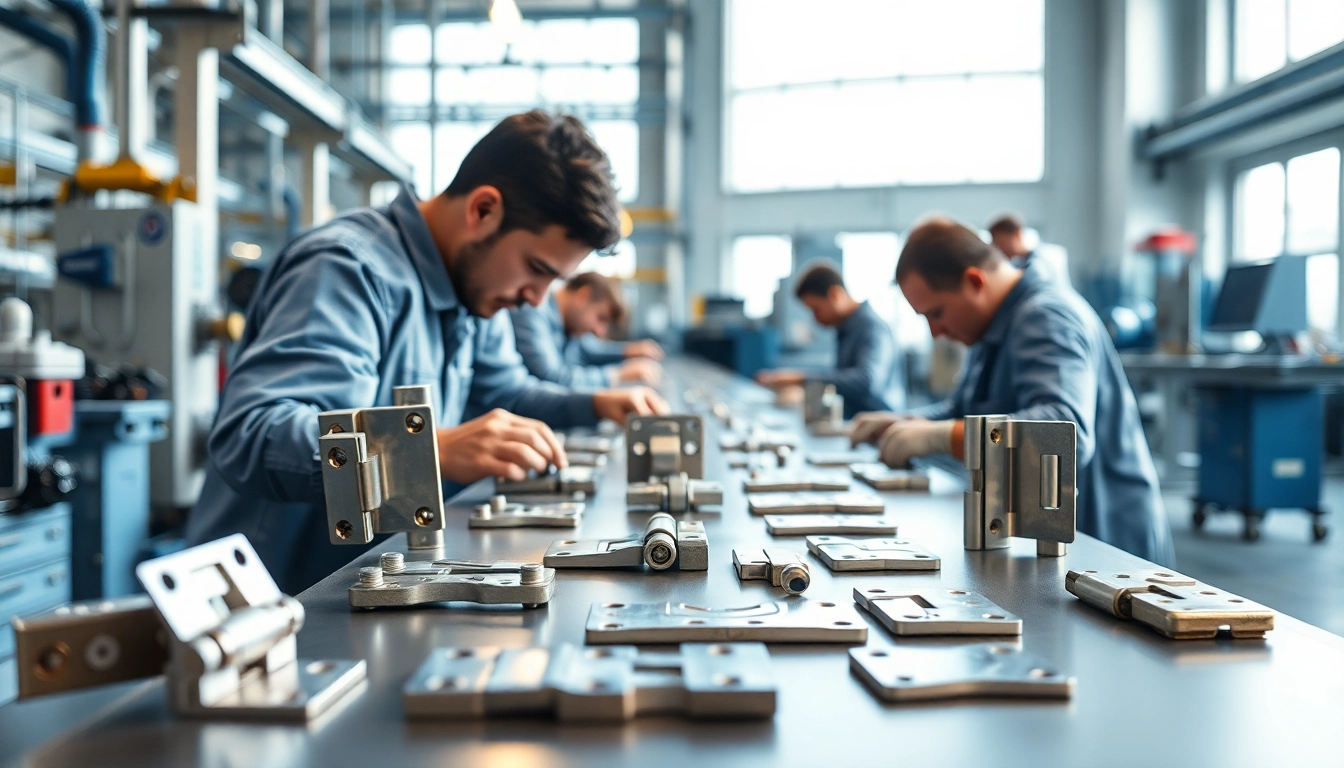Understanding Door Hinges: Types and Applications
Door hinges play a crucial role in the functionality and aesthetics of doors in residential and commercial setups. As a Door Hinges Manufacturer, it’s vital to recognize the types and applications of these hardware components to make informed decisions regarding installation and use.
1.1 Overview of Door Hinge Types
Door hinges come in various types, each design suited for specific applications. The most common types include:
- Butt Hinges: Ideal for interior doors, these are standard hinges often found in homes and offices.
- Continuous Hinges: Also known as piano hinges, these provide support along the entire length of the door, offering added stability.
- Spring Hinges: These automatically return doors to a closed position, making them suitable for high-traffic areas.
- Ball Bearing Hinges: Designed for durability and smooth operation, these are perfect for heavy doors.
- Concealed Hinges: Often used in cabinetry, they remain hidden when the door is closed, enhancing aesthetics.
1.2 Choosing the Right Door Hinge for Your Project
Selecting the proper hinge requires understanding the door’s weight, material, and frequency of use. Here are critical factors to consider:
- Weight Capacity: Ensure the hinge can support the door’s weight without sagging.
- Material: Options include stainless steel for high durability or brass for a classic look.
- Style Matching: Choose hinges that complement the door style and overall decor.
Consulting with an expert in hinges can further help in making the right choice that aligns with design and functionality.
1.3 Common Mistakes in Selecting Door Hinges
It’s easy to overlook certain specifications when choosing hinges. Avoid these common pitfalls:
- Ignoring Weight Requirements: Using a hinge not rated for the door’s weight can lead to failure.
- Choosing the Wrong Finish: A mismatch can affect both durability and aesthetic appeal.
- Underestimating Usage: High-traffic areas require hinges designed for frequent use or heavy loads.
Performance and Durability: Key Features of Quality Hinges
High-quality door hinges enhance performance and longevity, which is vital for both functionality and safety.
2.1 Materials Used in Manufacturing High-Quality Hinges
The durability of hinges largely depends on the materials used in their production. High-quality materials commonly include:
- Stainless Steel: Highly resistant to corrosion and wear, suitable for both indoor and outdoor applications.
- Brass: Offers aesthetic appeal and natural corrosion resistance, making it ideal for decorative hinges.
- Steel: Commonly used for heavy-duty hinges, often coated for additional protection against rust.
2.2 Testing for Strength and Longevity
Quality hinges undergo rigorous testing to ensure they meet industry standards. Important tests include:
- Load Testing: Determines how much weight a hinge can bear before failing.
- Cycle Testing: Measures how many times a hinge can open and close without malfunctioning.
- Corrosion Resistance Testing: Assesses how well the hinge can withstand environmental factors.
2.3 Best Practices for Maintenance and Care
To prolong the life of your hinges, consider these maintenance tips:
- Regular Cleaning: Dust and debris can obstruct hinge movement; clean regularly.
- Lubrication: Apply a suitable lubricant to prevent squeaking and ensure smooth operation.
- Inspection: Regularly check for rust, wear, or loosening and address these issues promptly.
Innovations in Hinge Manufacturing: Trends to Watch
The hinge manufacturing industry is vibrant with innovations aimed at improving functionality and sustainability.
3.1 Advances in Technology and Automation
Modern manufacturing technologies such as CNC (Computer Numerical Control) machining allow for precise cutting and shaping, leading to enhanced product quality. Automation aids in speeding up production while ensuring consistent quality in bulk orders.
3.2 Eco-Friendly Practices in Hinge Production
With growing environmental concerns, many manufacturers are adopting eco-friendly practices, such as:
- Using Recyclable Materials: Sourcing sustainable raw materials helps in reducing the environmental footprint.
- Energy Efficiency: Modifying production processes to use less energy while maintaining quality.
- Minimizing Waste: Implementing practices that reduce scrap during manufacturing can enhance sustainability.
3.3 Customization Options for Modern Applications
Customization is on the rise in hinge manufacturing, providing solutions tailored to specific applications. Options include:
- Special Finishes: Unique coatings for enhanced aesthetics or corrosion resistance.
- Sizes and Configurations: Custom sizes to fit doors of varied dimensions and designs.
- Integrated Technology: Smart hinges that support additional functionalities, such as locking mechanisms.
Top Door Hinges Manufacturers: A Competitive Landscape
The door hinges market is competitive, with several leading manufacturers setting industry standards based on innovation, quality, and service.
4.1 Comparing Market Leaders
Market leaders such as Hager, Stanley, and Kiesler Machine, distinguish themselves through various unique features:
- Hager: Known for their extensive range of commercial and residential hinges, offering customization options.
- Stanley: Renowned for their durable, heavy-duty hinges ideal for commercial applications.
- Kiesler Machine: Specializes in producing precision and heavy-duty hinges suited for rigorous industrial use.
4.2 Unique Selling Propositions of Leading Brands
Each manufacturer communicates a unique value proposition:
- Quality Assurance: Many brands emphasize stringent testing and quality controls to ensure reliability.
- Innovation: Ongoing investment in research and development to create more efficient and durable hinge designs.
- Customer Service: Providing expert advice and support to customers during the selection and installation process.
4.3 What Sets Your Brand Apart
For a manufacturer to stand out, integrating customer-centric solutions and embracing emerging technologies is essential. Positioning as a provider of high-quality, sustainable hinges backed by a commitment to service can attract discerning clientele.
Integrating Hinges into Your Design: Expert Tips
Effective integration of hinges into design can enhance both functionality and aesthetics of doors.
5.1 Designing for Aesthetic and Functionality
Choose hinges not only for their functional capabilities but also for their visual impact. For ornate doors, select decorative hinges that complement the overall design. In contrast, functional spaces could benefit from contemporary, minimalistic hinges.
5.2 Collaborating with Architects and Builders
Close collaboration with architects and builders ensures selection of the right hinges that fit the design without compromising on functionality. Engage them early in the design process to align on specifications and requirements.
5.3 Case Studies of Successful Hinge Applications
Taking lessons from past successful projects can offer invaluable insights. For instance, using heavy-duty ball bearing hinges in commercial settings can significantly enhance durability and lifespan, ultimately reducing long-term maintenance costs.



